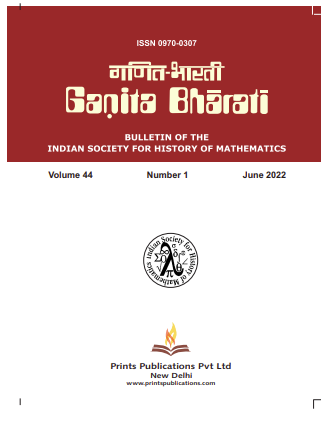Ganita Bharati
Published in Association with Bulletin of The Indian Society for History of Mathematics
Current Volume: 45 (2023 )
ISSN: 0970-0307
Periodicity: Half-Yearly
Month(s) of Publication: June & December
Subject: Mathematics
DOI: https://doi.org/10.32381/GB
Online Access is Free for Life Member
Apodictic discourse and the Cauchy-Bunyakovsky-Schwarz inequality
By : Satyanad Kichenassamy
Page No: 129-147
Abstract
Bunyakovsky’s integral inequality (1859) is one of the familiar tools of modern analysis. We try and understand what Bunyakovsky did, why he did it, why others did not follow the same path, and explore some of the mathematical (re)interpretations of his inequalities. This is achieved by treating the texts as discourses that provide motivation and proofs by their very discursive structure, in addition to what meets the eye at first reading. Bunyakovsky paper is an outgrowth of the mathematical theory of mean values in Cauchy’s work (1821), but viewed from the point of view of Probability and Statistics. Liouville (1836) gave a result that implies Bunyakovsky’s inequality, but did not identify it as significant because his interests lay elsewhere. Grassmann (1862) stated the inequality in abstract form but did not prove it for reasons that can be identified. Finally, by relating the result to quadratic binary forms, Schwarz (1885) opened the way to a geometric interpretation of the inequality that became important in the theory of integral equations. His argument is the source of one of the proofs most commonly taught nowadays. At about the same time, the Rogers- Hölder inequality suggested generalizations of Cauchy’s and Bunyakovsky’s results in an entirely different direction. Later extensions and reinterpretations show that no single result, even now, subsumes all known generalizations.
Author :
Satyanad Kichenassamy
Université de Reims Champagne-Ardenne,Laboratoire de Mathématiques (CNRS, UMR9008), B.P. 1039, F-51687 Reims Cedex 2, France.
DOI: https://doi.org/10.32381/GB.2020.42.1-2.5




